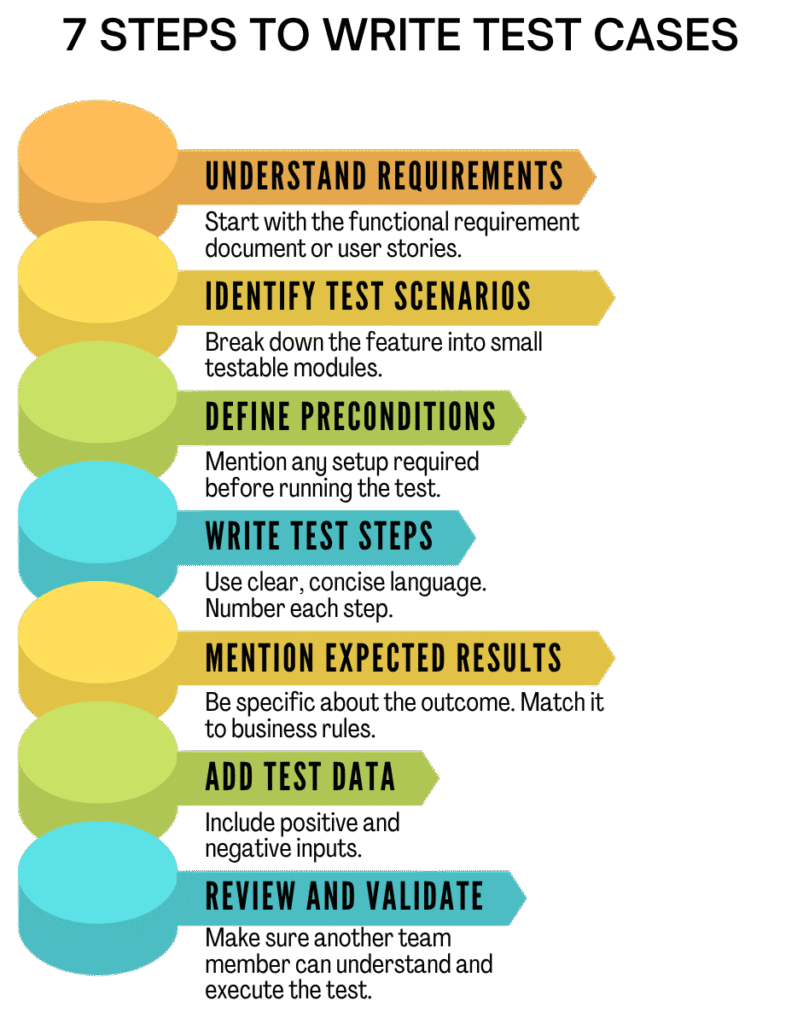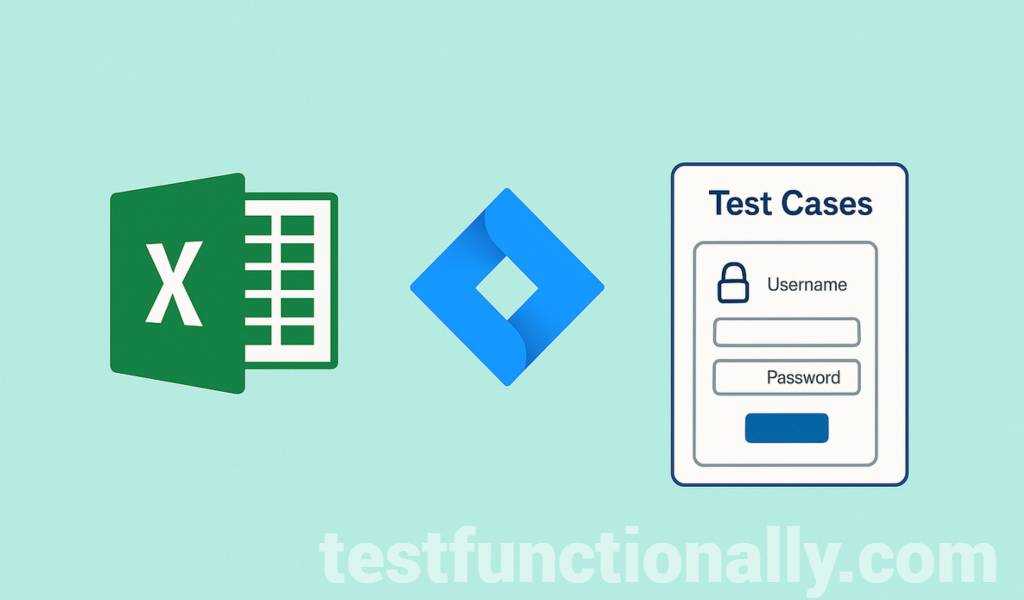Introduction
In software testing, writing effective test cases is essential to ensure high-quality, bug-free applications. Functional test cases help testers validate the features and behavior of the software against business requirements. Whether you’re using Excel, Jira, or any other tool, knowing how to write test cases correctly is a vital skill. In this guide, you will learn how to write functional test cases with examples, tools, templates, and best practices.
What is a Test Case in Software Testing?
A test case is a documented set of conditions or variables under which a tester assesses whether an application behaves as expected. It includes the inputs, execution steps, expected results, and actual results.
Test Case vs Test Scenario vs Test Script:
Test Case: A specific condition to test (e.g., login with valid credentials).
Test Scenario: A high-level functionality to test (e.g., verify login module).
Test Script: The automation code that executes the test case.
Anatomy of a Good Functional Test Case
Each test case should include the following:
– Test Case ID
– Title/Description
– Preconditions
– Test Data
– Test Steps
– Expected Result
– Actual Result
– Status (Pass/Fail)
– Comments
Example:
| Test Case ID | Title | Preconditions | Test Data | Test Steps | Expected Result | Actual Result | Status (Pass/Fail) | Comment |
| TC01 | Login with valid details | Login page URL | Username: user123 Password: Pwd@1234 | Navigate to the login page. | Login page should be opened. | |||
| Enter username. | User should be able to enter username. | |||||||
| Enter password. | User should be able to enter password. | |||||||
| Click on login button. | Dashboard page should open sucessfully. |
How to Write Functional Test Cases

Functional Test Case Examples
- Positive Test Case: Login with correct credentials.
- Negative Test Case: Login with incorrect password.
- Boundary Test Case: Input maximum character limit in form.
Writing Test Cases for Common Scenarios
Login Page Example:
Enter valid username and password → Dashboard loads
Enter invalid credentials → Error message shown
Leave fields blank → Required field warnings
Where to Write Test Cases: Tools & Templates
1. Excel:
- Use columns for each field (ID, Description, Steps, etc.)
- Easy to maintain for small projects
- Detailed guide: How to Write Test Cases in Excel
2. Jira:
- Ideal for agile teams using plugins like Zephyr, Xray
- Integrates with sprint boards and user stories
- Detailed guide: [How to Write Test Cases in Jira]
3. Other Tools:
TestRail, TestLink, PractiTest, etc.
Common Mistakes to Avoid
- Vague steps (e.g., “click the button”)
- Missing expected results
- Not covering negative scenarios
- No traceability to requirements
Conclusion
Writing test cases is a foundational skill in software testing. With clear steps, defined outcomes, and proper tools, you can ensure your test coverage is complete and reliable. Start by downloading our templates and explore the linked guides for writing test cases in Excel, Jira, and for login pages.
Want more? Bookmark this guide and check out the related posts to master test case writing!


Pingback: Top Manual Testing Interview Questions (2025) for Freshers to 6+ Years Experienced QA Testers - testfunctionally.com